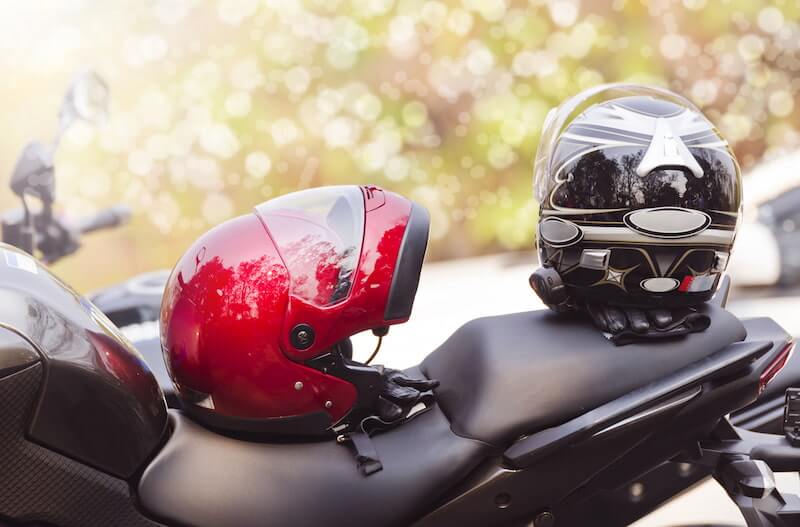Helmets are essential safety gear designed to protect your head during various activities, from cycling and motorcycling to extreme sports and construction work. While helmets are built to last, they don’t provide protection indefinitely. Understanding whether helmets expire, when to replace them, and how to care for them is vital for ensuring your safety. This comprehensive guide explores everything you need to know about helmet expiration and replacement.
Do Helmets Expire?
Unlike perishable goods, helmets don’t come with a fixed expiration date. However, their protective features can degrade over time due to material wear, environmental exposure, and usage. Most helmet manufacturers recommend replacing helmets every 3 to 5 years, even if they appear undamaged. Factors contributing to helmet expiration include:
1. Material Degradation
- Outer Shell: Over time, the helmet’s outer shell can weaken due to UV exposure, temperature changes, and general wear.
- Inner Foam: The Expanded Polystyrene (EPS) foam or similar materials inside the helmet are designed to absorb impact. Repeated minor impacts or aging can reduce their effectiveness.
2. Wear and Tear
Regular use causes inevitable wear, including scratches, dents, and loose padding. Even seemingly minor damages can compromise a helmet’s integrity, making it less effective in protecting you.
3. Environmental Exposure
Helmets exposed to extreme conditions like direct sunlight, rain, or high humidity may degrade faster. UV rays, in particular, can weaken the outer shell and accelerate material aging.
4. Technological Advancements
Helmet safety technology evolves rapidly. Older helmets may lack advanced features like multi-directional impact protection (MIPS) or better ventilation and comfort options available in newer models.

Signs It’s Time to Replace Your Helmet
Even if your helmet hasn’t reached the recommended replacement period, certain signs indicate it’s time for a new one:
1. After a Significant Impact
Helmets are designed to absorb the force of a single significant impact. If your helmet has been involved in a crash or severe collision, its protective capabilities are compromised, even if there are no visible damages.
2. Visible Damage
- Cracks in the outer shell
- Compressed or dented foam
- Torn or worn straps
3. Loose Fit
Over time, the helmet’s padding and straps may stretch or wear out, leading to a less secure fit. A loose helmet cannot provide optimal protection.
4. Fading or Discoloration
Prolonged exposure to sunlight can cause fading or discoloration, indicating UV damage that may have weakened the helmet’s materials.
5. Unpleasant Odor or Mold
If your helmet smells bad or shows signs of mold growth despite cleaning, it’s time to replace it. These issues indicate compromised hygiene and possible material degradation.

How to Extend Your Helmet’s Lifespan
While helmets don’t last forever, proper care can maximize their usability and delay replacement:
1. Store Properly
- Keep your helmet in a cool, dry place away from direct sunlight and extreme temperatures.
- Use a helmet bag or case to protect it from dust and scratches.
2. Clean Regularly
- Wipe the exterior with a soft cloth and mild soap.
- Remove and wash the inner padding according to the manufacturer’s instructions.
- Ensure the helmet is completely dry before storage to prevent mold or mildew.
3. Avoid Dropping
Even minor drops can compromise the integrity of your helmet. Handle it carefully to avoid accidental impacts.
4. Check Straps and Buckles
Inspect the straps and buckles regularly for signs of wear. Replace any damaged components promptly.
The Lifespan of Different Types of Helmets
The recommended lifespan of a helmet varies depending on its type and usage. Here’s a breakdown of common helmet types:
1. Cycling Helmets
- Recommended Replacement: Every 3-5 years
- Factors: Frequent exposure to sunlight and outdoor conditions accelerate material degradation.
2. Motorcycle Helmets
- Recommended Replacement: Every 5 years
- Factors: Regular use, UV exposure, and sweat can degrade the materials over time. After an accident, immediate replacement is necessary.
3. Climbing and Mountaineering Helmets
- Recommended Replacement: Every 5-10 years (or after a major impact)
- Factors: These helmets are designed for impact protection and exposure to rugged environments, which can cause faster wear.
4. Construction Hard Hats
- Recommended Replacement: Every 2-5 years
- Factors: Hard hats are exposed to harsh conditions, including UV rays, chemicals, and physical impacts, requiring more frequent replacement.
Understanding Helmet Safety Standards
Helmets are tested and certified to meet specific safety standards, ensuring their effectiveness in protecting users. Common standards include:
- CPSC (Consumer Product Safety Commission): For bicycle helmets in the U.S.
- DOT (Department of Transportation): For motorcycle helmets in the U.S.
- Snell Memorial Foundation: For high-performance helmets used in motorsports.
- EN (European Standards): For various helmet types sold in Europe.
Always choose a helmet that meets or exceeds the safety standards relevant to your activity.
The Cost of Neglecting Replacement
Using an old or damaged helmet can have severe consequences:
Increased Risk of Injury
A compromised helmet cannot absorb impacts effectively, putting you at a higher risk of severe head injuries during accidents.
Legal and Compliance Issues
Certain activities, such as professional sports or construction work, require helmets to meet current safety standards. Using outdated helmets may violate regulations and lead to penalties.
Diminished Performance
Old helmets may lack the comfort, ventilation, and advanced features available in newer models, affecting your overall experience.
Conclusion
While helmets don’t have a fixed expiration date, their protective capabilities diminish over time due to wear, environmental factors, and material degradation. Replacing your helmet every 3-5 years, or sooner if it shows signs of damage, ensures optimal safety. Proper care and storage can extend your helmet’s lifespan, but no helmet lasts forever. By staying proactive about replacement and choosing helmets that meet current safety standards, you can protect yourself effectively and confidently during all your activities.


